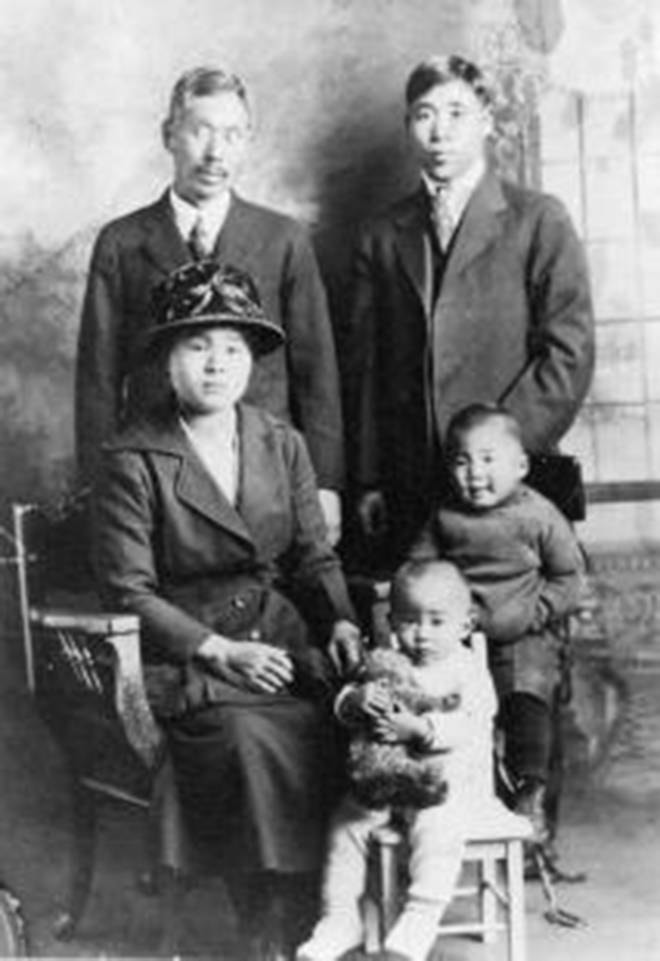Shigehisa Hikichi, who worked at Rainbow Ranch in Okanagan Centre, avoided racist riots in Vancouver by hiding in a broom closet.
91ÂãÁÄÊÓƵ˜Sam91ÂãÁÄÊÓƵ™ Hikichi was born in Senouye, Fukushima-ken, Japan in 1890. In 1907, at 17, he immigrated to Canada with his uncle Kichisaburo Hikichi, settling first in Vancouver.
Shigehisa worked at the Hotel Vancouver for several years. This was at the time of Vancouver91ÂãÁÄÊÓƵ™s Asiatic Exclusion League riots, where thousands of people marched through Chinatown and then through the Japanese community in the early 1900s, shouting racist slogans and vandalizing property. Shigehisa was at work that day and hid in a broom closet until the mob passed.
READ MORE: Historical happenings: Goldie saga highlights importance of family history
In 1911, Shigehisa moved to the Coldstream Ranch, working in the orchards and eventually establishing a chicken farm. In 1918 he moved to the Rainbow Ranche at Okanagan Centre to work, and stayed for a short time with the Koyama family in Winfield.
In 1920, Shigehisa Hikichi returned to Fukushima-ken, Japan for an arranged marriage to Tome Abe. Shigehisa was 30, while Tome was 24. The Hikichis returned to the Rainbow Ranche, where they lived and worked for 35 years.
READ MORE: What91ÂãÁÄÊÓƵ™s in a Name? Introducing Pelmewash Parkway
Shigehisa 91ÂãÁÄÊÓƵ˜Sam91ÂãÁÄÊÓƵ™ Hikichi was the foreman at the Rainbow Ranche from the early 1920s until 1949, when the Rainbow was subdivided. Hikichi is known for being the first foreman at the Rainbow Ranche to start the procedure of crop estimating, a method of calculating the expected fruit yield.
James Goldie, manager of the Rainbow Ranche, considered Shigehisa Hikichi to be his right-hand man. The majority of the Japanese workers at the Rainbow lived at the Ranche, in a camp with bunkhouses and a kitchen. James Goldie built a tennis court for his workers. When the packinghouse was in full operation, it employed a large number of workers, most of whom were Japanese.
READ MORE: Learn a little about your home: Oyama settlers after the First World War
The Hikichi family lived at the Rainbow Ranche for almost thirty-five years. In 1953, the Rainbow was subdivided and Shigehisa purchased a portion of the property, which he farmed for four years.
Tome and Shigehisa91ÂãÁÄÊÓƵ™s two oldest boys, Shoichi and Hisao, were sent to Japan in 1928 to receive an education. Shoichi moved back to Canada ten years later, in 1938. Hisao remained in Japan the rest of his life. Many years later, Shigehisa Hikichi returned to Japan to live with his son Hisao.
READ MORE: Historical Lake Country happenings: Two stores compete in Oyama
By Lake Country Museum guest writer Mitsura Hikichi. Every week, the Lake Country Calendar will publish a column highlighting our community91ÂãÁÄÊÓƵ™s past.
edit@kelownacapnews.com
Like us on and follow us on .



